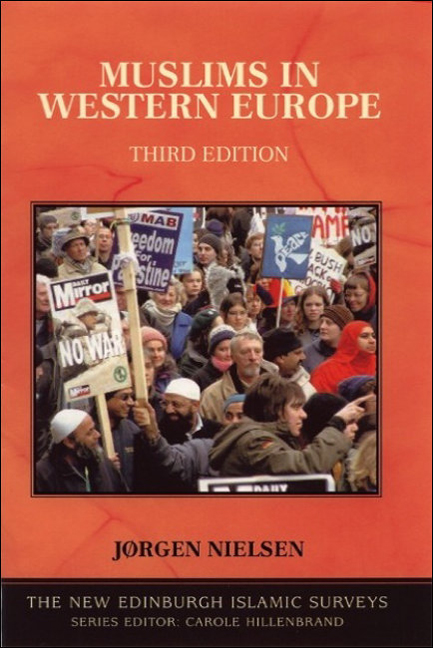6 - The Nordic countries
Published online by Cambridge University Press: 20 December 2017
Summary
DENMARK
Denmark joined the Europe-wide search for migrant labour in the late 1960s with an initially almost unrestricted labour immigration policy. Estimates in 1968 suggested that there were then about 2,000 Muslims in Denmark, but many of them will have belonged to the Ahmadi community, which had already built a mosque in 1967 in a Copenhagen suburb. This new immigration meant that by 1970 over 8,000 Turks, 2,000 Pakistanis and nearly 9,000 North Africans had entered the country. In the following few years, immigration restrictions were gradually imposed. Early in 1973, these restrictions were lifted, only to be followed towards the end of the year by a full stop to labour immigration, while permitting the continued entry of dependants as part of a policy of family reunion.
By the early 1980s, family reunion and some continuing labour immigration had brought the total for Turks and Pakistanis to nearly 16,000 and 6,600 respectively. By this time, there was also a growing Moroccan community of 2,000 to 3,000. The following decade saw one of the most radical changes in immigration patterns of any European country during this period. While the Turkish community continued to grow, reaching 30,000 by 1991, the Pakistani community stagnated – although it should be noted that many Pakistanis have moved to Denmark as UK citizens and do not therefore appear as Pakistanis in the official statistics. The change came as a result of unrest in the Middle East. The official data for 1981 recorded a total of 463 nationals of Lebanon, Iran and Iraq combined. Ten years later, the government recorded 2,800 Iraqis, 9,000 Iranians and 3,200 Lebanese residents, a combined total of 15,000! Of course, not all of these were of Muslim background, especially among the Lebanese and, to a lesser extent, among the Iraqis, but the majority were. By the end of 1990, therefore, the total number of Muslims estimated for Denmark was between 55,000 and 60,000, and the second-largest national group had arrived within the decade. In this development, one also finds the reason for Denmark adopting one of the harshest immigration and refugee policies of all the countries of western Europe.
- Type
- Chapter
- Information
- Muslims in Western Europe , pp. 84 - 97Publisher: Edinburgh University PressPrint publication year: 2015



